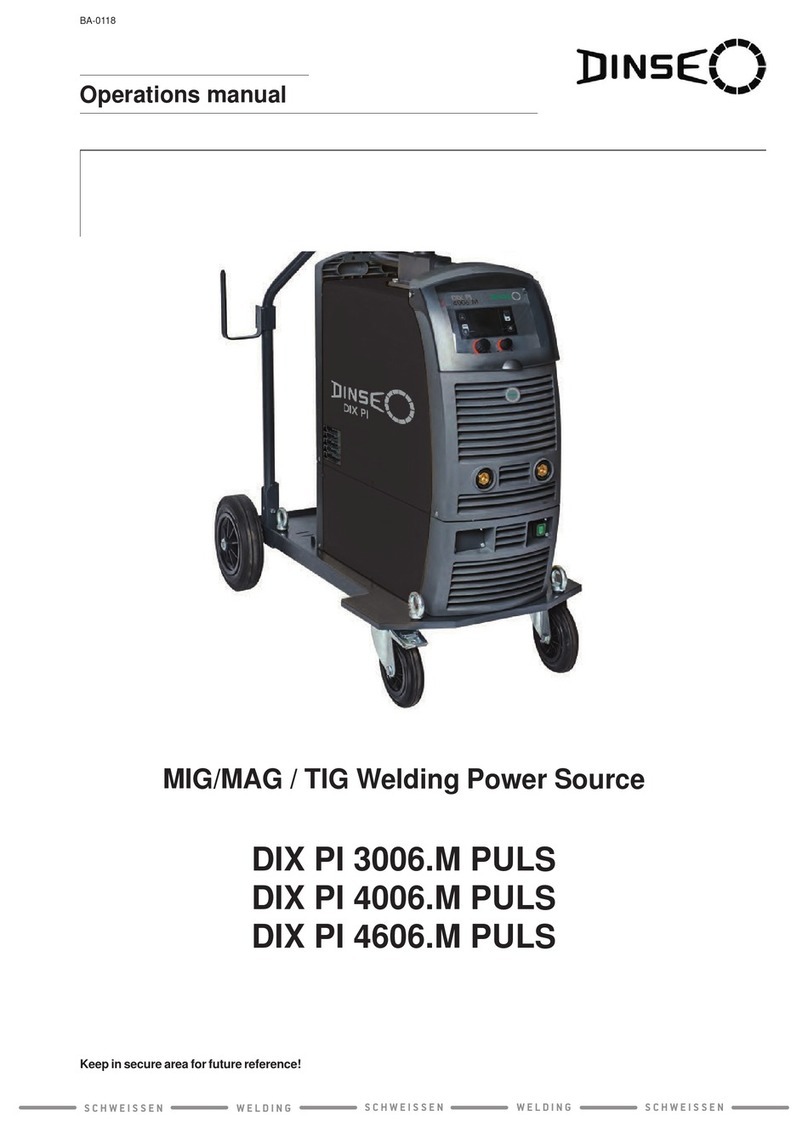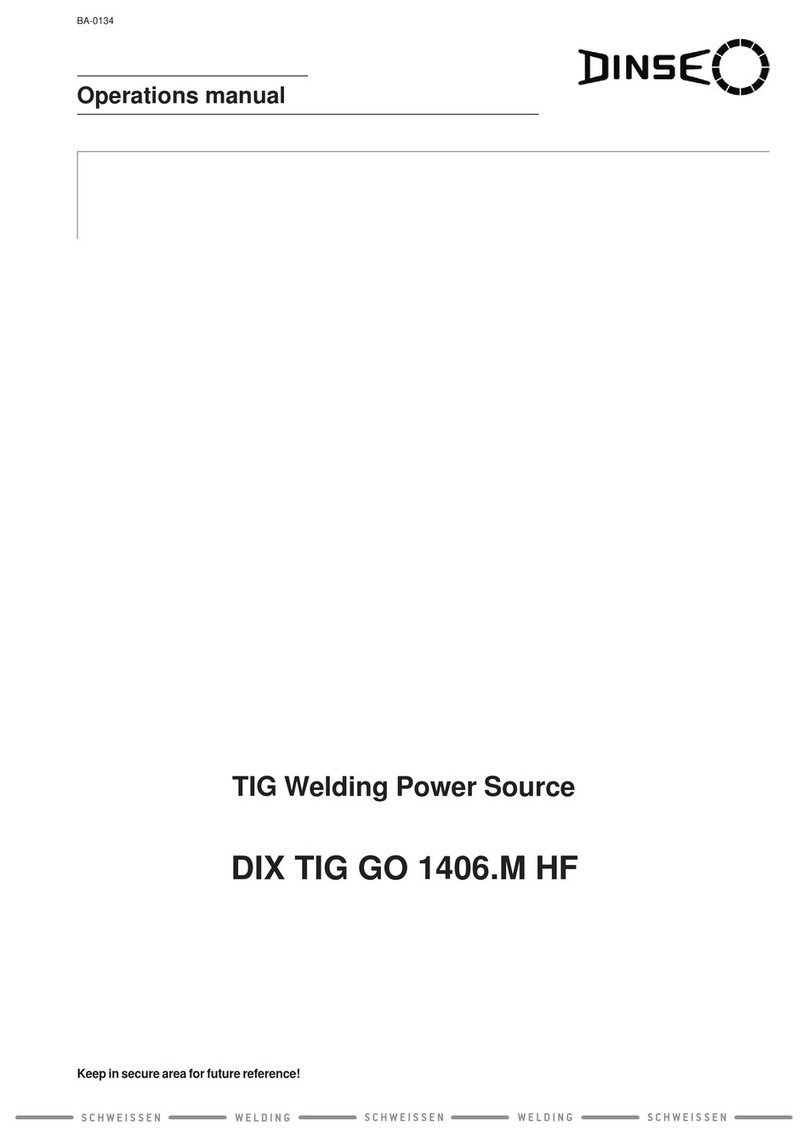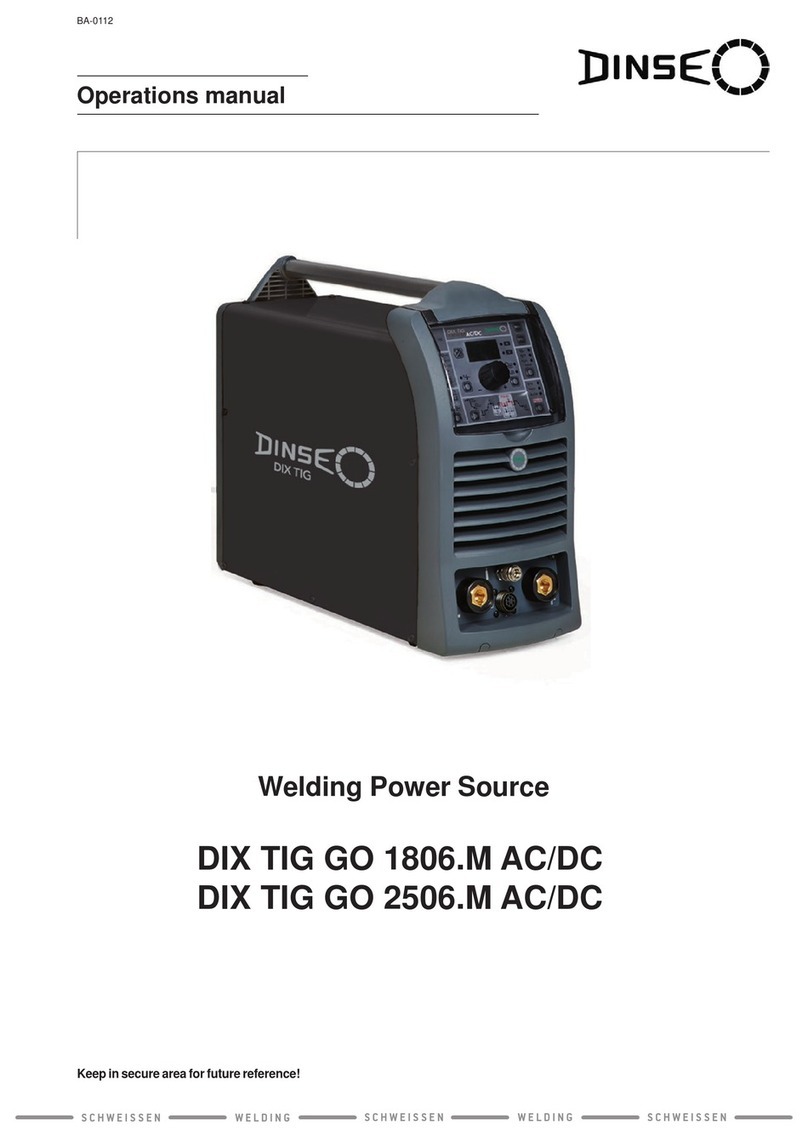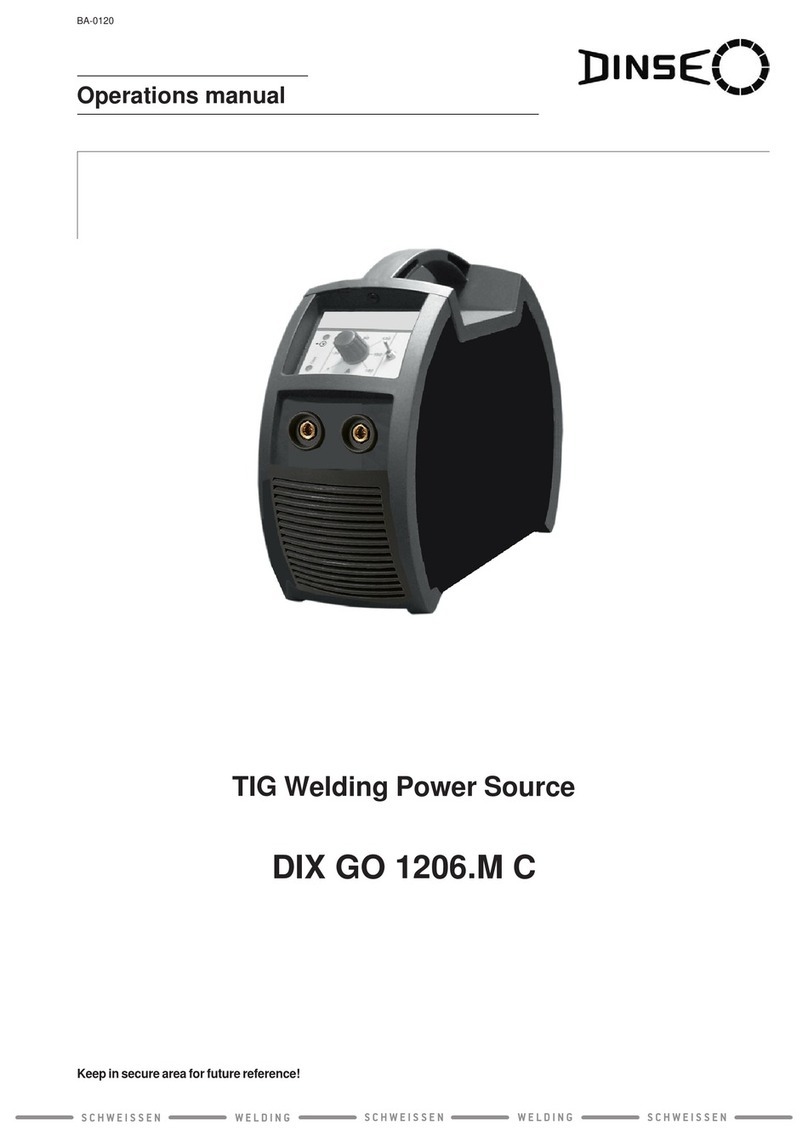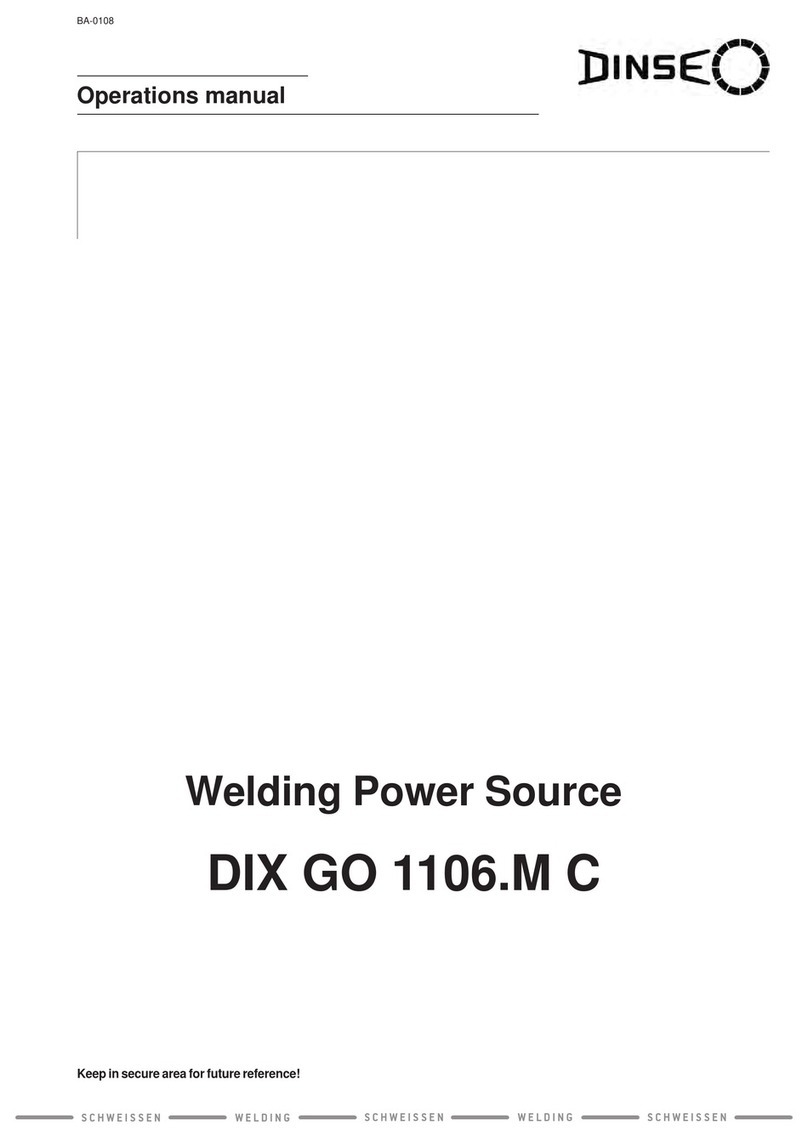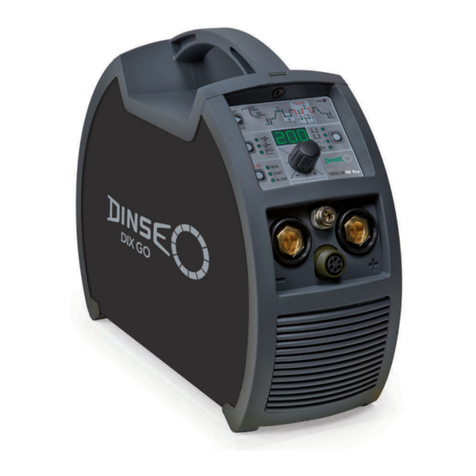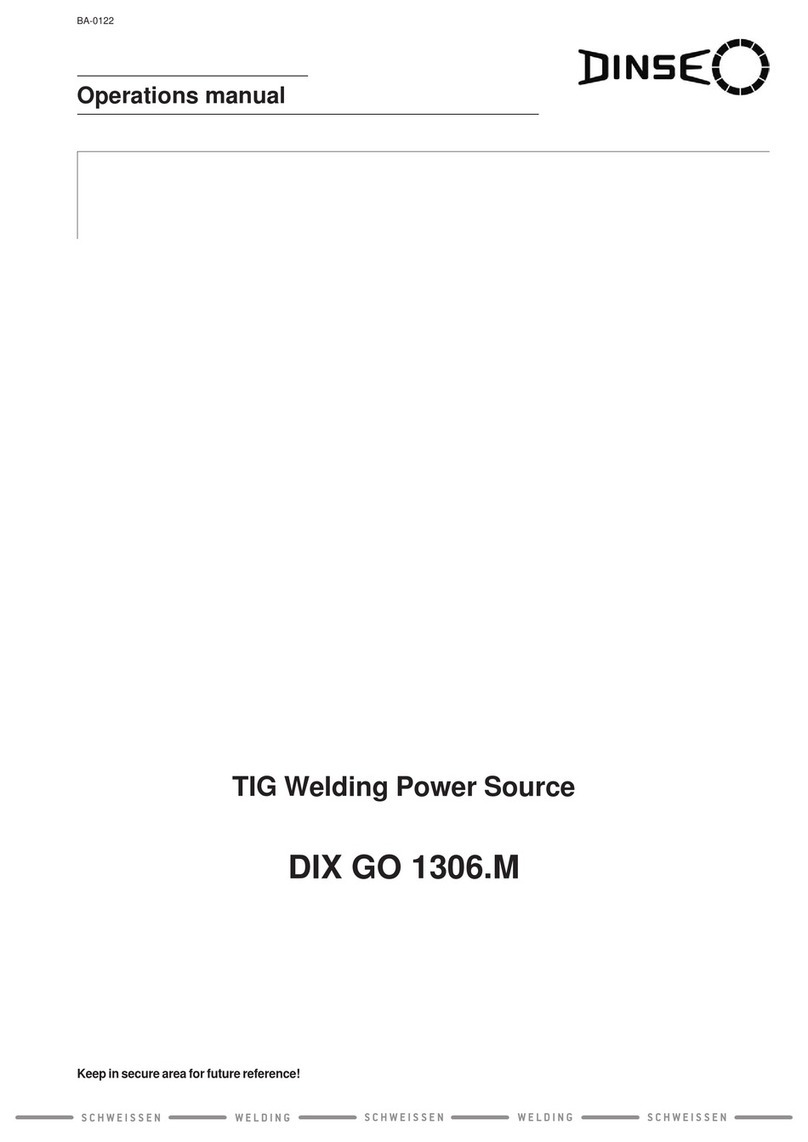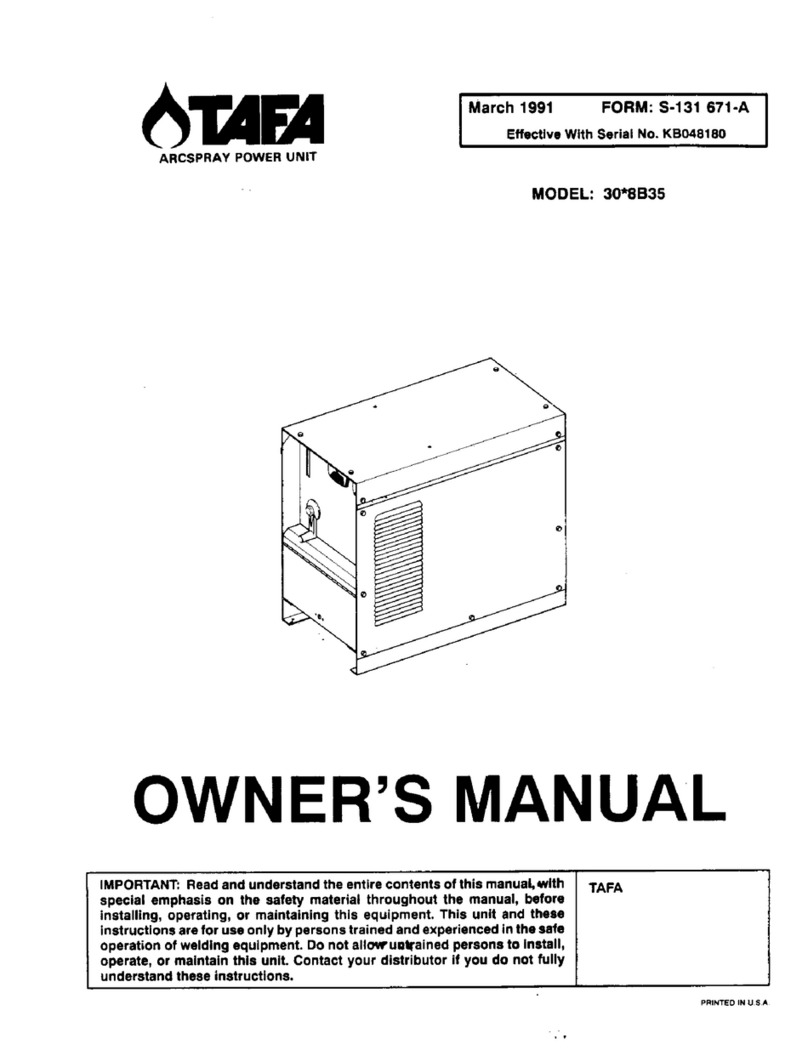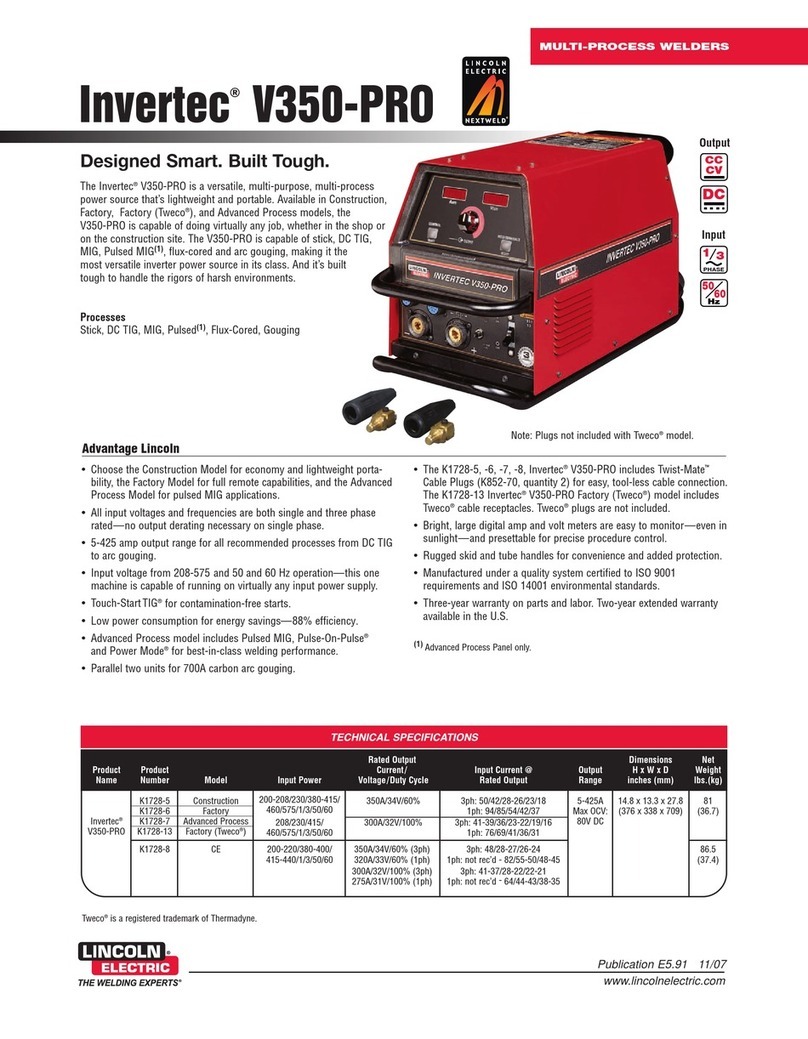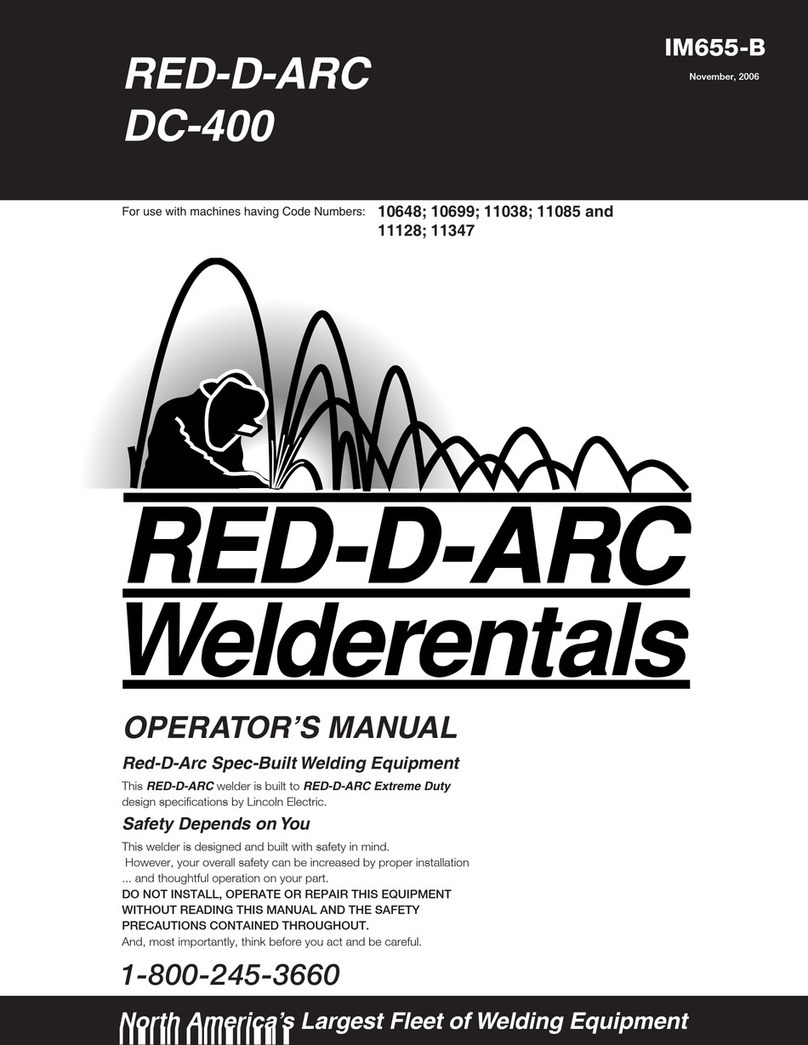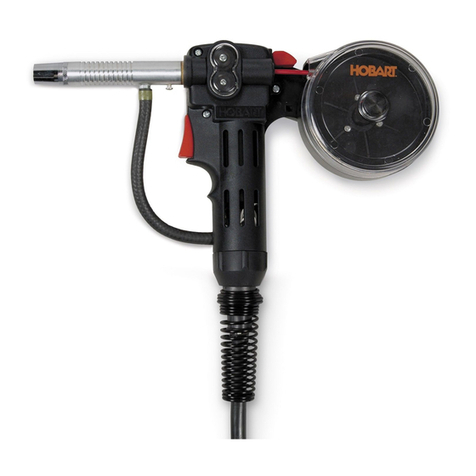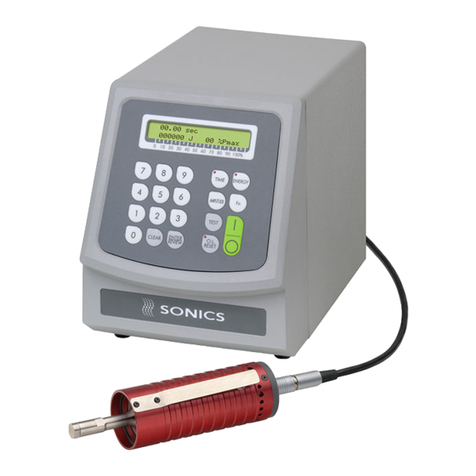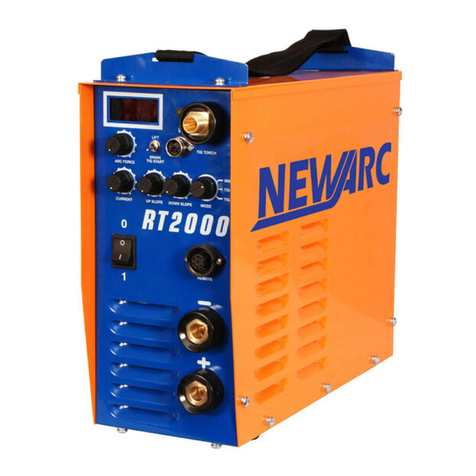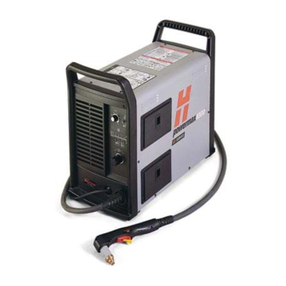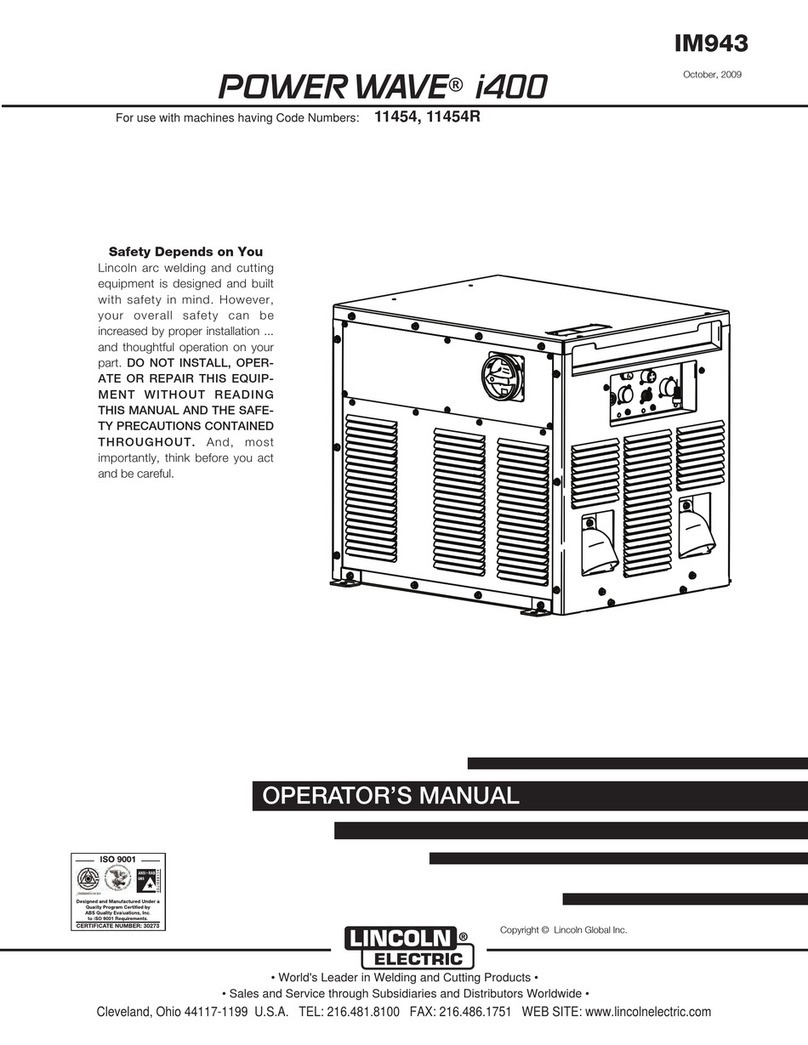
3
• Selector with 3 weld procedures:
- Basic electrodes with “Hot Start” and “Arc Force” device.
-
Stainless steel electrodes with special characteristics for a
soft arc.
-
TIG welding with thermal controlled (TCS) “Lift” type striking
reducing tungsten inclusions to a minimum and allowing to
also strike on sharp edges.
•
The generator also conforms to all European Union standards
and directives in force.
Technical data
The general technical data of the system are summarized in ta-
ble 1.
Usage limits (IEC 60974-1)
The use of a welder is typically discontinuous, in that it is made up
of effective work periods (welding) and rest periods (for the posi-
tioning of parts, the replacement of wire and underflushing opera-
tions etc. This welder is dimensioned to supply a I2max nominal
current in complete safety for a period of work of 30% of the to-
tal usage time. The regulations in force establish the total usage
time to be 10 minutes. The work cycle is considered to be 30% of
this period of time. If the permitted work cycle time is exceeded,
an overheat cut-off occurs to protect the components around the
welder from dangerous overheating. Intervention of the overheat
cut-off is indicated by the lighting up of yellow thermostat LED.After
several minutes the overheat cut-off rearms automatically (and the
yellow LED turns itself off) and the welder is ready for use again.
How to lift up the machine
This welding machine has a handle for picking it up and carrying
it by hand.
NOTE: These hoisting and transportation devices conform to Eu-
ropean standards. Do not use other hoisting and transportation
systems.
Open the packaging
•
Upon receiving the system:
•
Remove the welding generator and all the relative accesso-ries-
components from the pack and the case (if present).
•
Check that the weld machine is in good condition, if not report
any problems immediately to the seller-distributor.
•
Make sure all ventilation grilles are open and that no foreign bod-
ies are blocking the air circulation.
Installation
The installation site for the system must be carefully chosen in or-
der to ensure its satisfactory and safe use.
The user is responsible for the installation and use of the system
in accordance with the producer’s instructions contained in this
manual.
Before installing the system the user must take into consideration
the potential electromagnetic problems in the work area. In particu-
lar, we suggest that you should avoid installing the system close to:
• Signalling, control and telephone cables.
• Radio and television transmitters and receivers.
• Computers and control and measurement instruments.
• Security and protection instruments.
Persons fitted with pace-makers, hearing aids and similar equip-
ment must consult their doctor before going near a machine in op-
eration. The equipment’s installation environment must comply to
the protection level of the frame i.e. IP 21 S (IEC 60529 publica-
tion). This system is cooled by means of the forced circulation of
air, and must therefore be placed in such a way that the air may
be easily sucked in and expelled through the apertures made in
the frame.
Connection to the electrical supply
Before connecting the welder to the electrical supply, check
that the machine’s plate rating corresponds to the supply volt-
age and frequency and that the line switch of the welder is in
the “O” position.
Use the welder’s own plug to connect it up to the main power sup-
ply. Proceed as follows if you have to replace the plug:
•
2 conducting wires are needed for connecting the machine to
the supply.
• The third, which is YELLOW GREEN in colour is used for mak-
ing the “EARTH” connection.
DIX GO 1206.M works with circuit breaker or fusible power switch-
es.
Table 2 shows the capacity values that are recommended for fus-
es in the line with delays.
NOTE 1: Any extensions to the power cable must be of a suitable
diameter, and absolutely not of a smaller diameter than the spe-
cial cable supplied with the machine.
NOTE 2: It is not advisable to plug up the welder to motor-driv-
en generators, as they are known to supply an unstable voltage.
Usage norms
CONTROL APPARATUS (Fig. A)
Pos. 1 Supply switch. In the “O” position the welder is off.
Pos. 2 Welding current adjust potentiometer.
Pos. 3 Selector 3 weld procedures:
• ELECTRODE - For basic electrode welding with “Arc
Force” and “Hot Start” device.
•
Cr-Ni ELECTRODE - For stainless steel welding with
special soft-arc characteristics.
Table 2
Model DIX GO 1206.M
Power input @ I2Max kVA 7,6
Delayed fuse (I2@ 100%) A16
Duty cycle @ 30% (40°C) A150
Mains supply connection cable
Length
Section m
mm22,2
2,5
Earth cable
Section mm216
